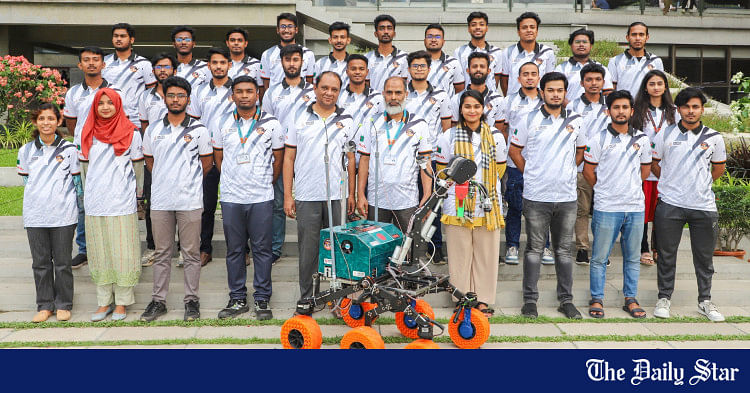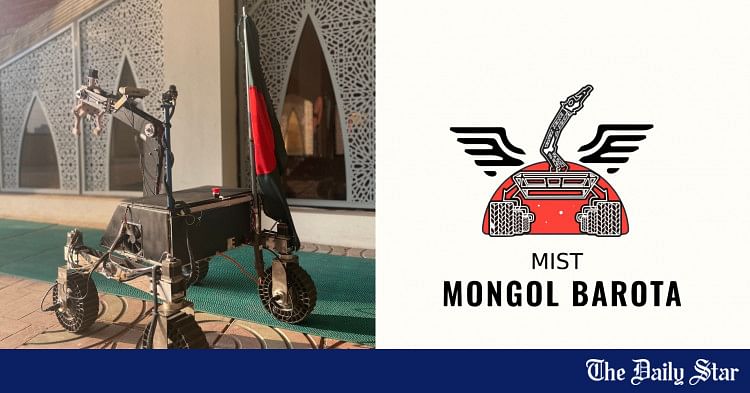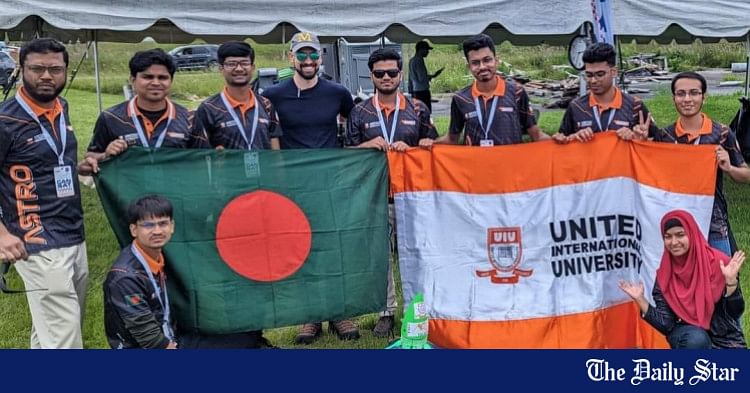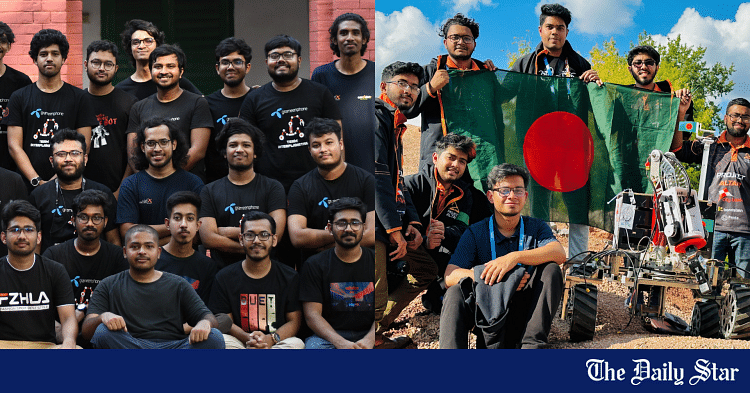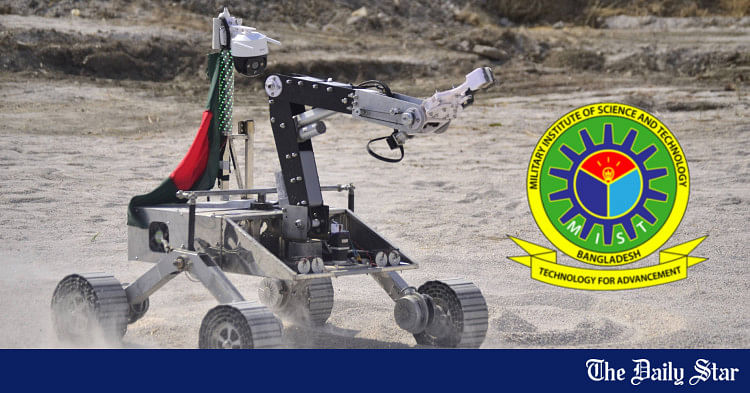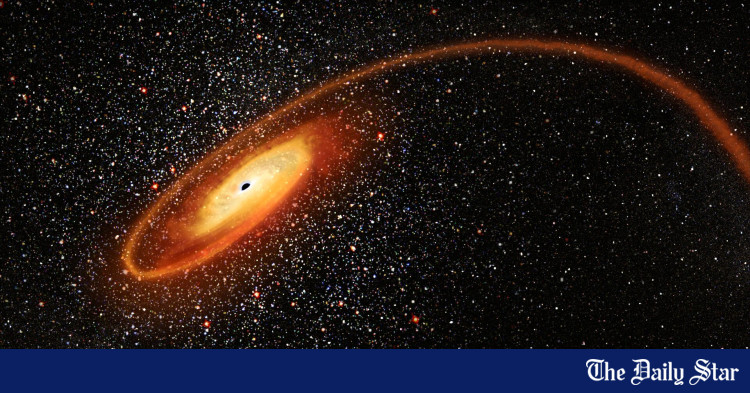- Copy to clipboard
- Thread starter
- #16
Saif
Senior Member
- Messages
- 14,106
- Reaction score
- 7,446
- Origin

- Residence

- Axis Group


Daffodil International University students to represent Bangladesh at NASA
Team Diamonds from DIU won the NASA Space Apps Challenge 2022 with their project "Diamond in the Sky".
Daffodil International University students to represent Bangladesh at NASA

Photo: Courtesy
"Team Diamonds", a team of students from the Department of Software Engineering, Daffodil International University (DIU), won the NASA Space Apps Challenge 2022 as the "Most Inspirational" project. The team is now heading to NASA – National Aeronautics and Space Administration – to represent the country as the champions of this prestigious international competition.
Team Diamonds is led by Tisha Khandokar as its team leader. Other team members include Md Munim Ahmed, the team's UI/UX designer and data analyst; Injamamul Haque Sonet, the System Architect; Abu Niaz, the app's developer, and Zarin Chowdhury, the team's dedicated researcher.
The team's winning project, "Diamond in the Sky", is an interactive, game-based learning tool designed for children aged 10 to 12.
"This innovative application aims to teach kids about stellar variability and the dynamic nature of the night sky," said Tisha to The Daily Star. "By engaging with the game, children can recognise star patterns, understand star colours, and learn about their brightness. The purpose of our app is to provide young learners the opportunity to comprehend star twinkling and the slow changes in the night sky, fostering a new perspective and appreciation for astronomy."
"Winning the NASA Space Apps Challenge is an incredible honour and a source of immense pride for our team and our country," added Tisha. "Representing Bangladesh and getting to raise our red and green flag at NASA fills us with joy and pride, showcasing our nation's potential on a global stage."
As Team Diamonds sets to depart for NASA, they have high expectations from their visit.
"Our plans include meeting with NASA scientists and gaining valuable knowledge about space science," said Tisha. "We are particularly excited about our invitation to visit the Goddard Space Flight Center, which promises hands-on experience with cutting-edge space science and technology. This visit will undoubtedly enrich our understanding and inspire further innovation."
She said, "By addressing genuine issues, you can make meaningful contributions to the world and increase your chances of success in any competition. Embrace the challenge, think creatively, and remember that your solutions can have a significant impact. This mindset is key to excelling in the NASA Space Apps Challenge and making a difference in the field of space science."
Photo: Courtesy
"Team Diamonds", a team of students from the Department of Software Engineering, Daffodil International University (DIU), won the NASA Space Apps Challenge 2022 as the "Most Inspirational" project. The team is now heading to NASA – National Aeronautics and Space Administration – to represent the country as the champions of this prestigious international competition.
Team Diamonds is led by Tisha Khandokar as its team leader. Other team members include Md Munim Ahmed, the team's UI/UX designer and data analyst; Injamamul Haque Sonet, the System Architect; Abu Niaz, the app's developer, and Zarin Chowdhury, the team's dedicated researcher.
The team's winning project, "Diamond in the Sky", is an interactive, game-based learning tool designed for children aged 10 to 12.
"This innovative application aims to teach kids about stellar variability and the dynamic nature of the night sky," said Tisha to The Daily Star. "By engaging with the game, children can recognise star patterns, understand star colours, and learn about their brightness. The purpose of our app is to provide young learners the opportunity to comprehend star twinkling and the slow changes in the night sky, fostering a new perspective and appreciation for astronomy."
"Winning the NASA Space Apps Challenge is an incredible honour and a source of immense pride for our team and our country," added Tisha. "Representing Bangladesh and getting to raise our red and green flag at NASA fills us with joy and pride, showcasing our nation's potential on a global stage."
As Team Diamonds sets to depart for NASA, they have high expectations from their visit.
"Our plans include meeting with NASA scientists and gaining valuable knowledge about space science," said Tisha. "We are particularly excited about our invitation to visit the Goddard Space Flight Center, which promises hands-on experience with cutting-edge space science and technology. This visit will undoubtedly enrich our understanding and inspire further innovation."
She said, "By addressing genuine issues, you can make meaningful contributions to the world and increase your chances of success in any competition. Embrace the challenge, think creatively, and remember that your solutions can have a significant impact. This mindset is key to excelling in the NASA Space Apps Challenge and making a difference in the field of space science."

